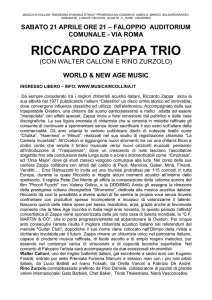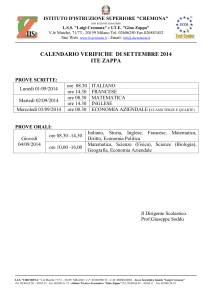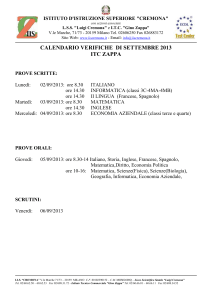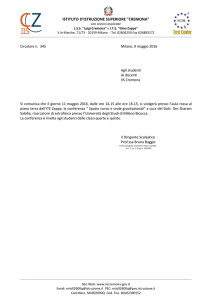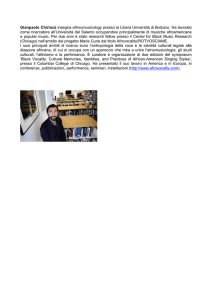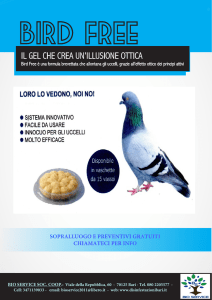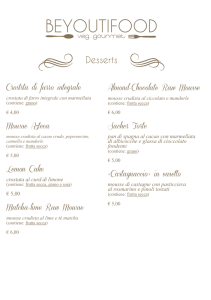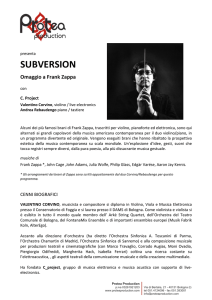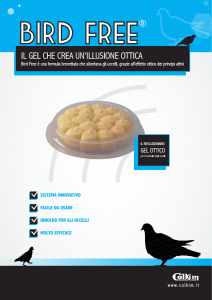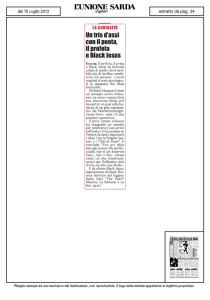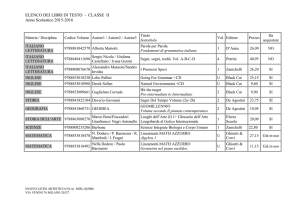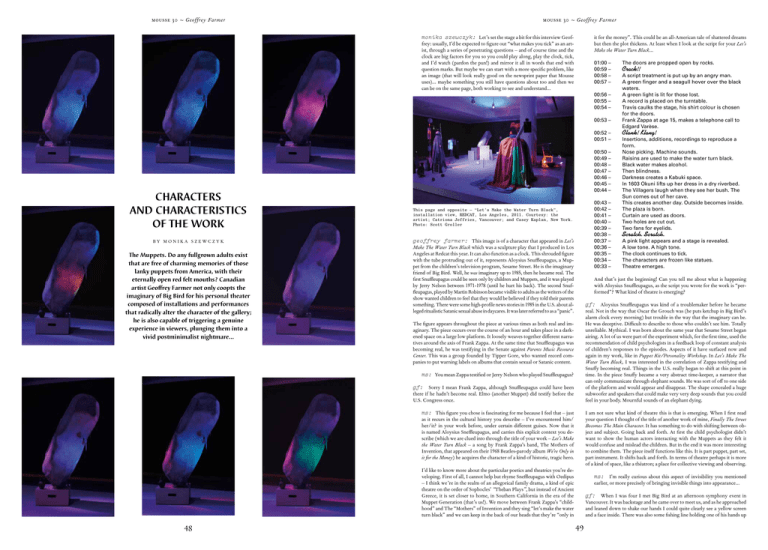
mousse 30 ~ Geoffrey Farmer
mousse 30 ~ Geoffrey Farmer
monika szewczyk: Let’s set the stage a bit for this interview Geoffrey: usually, I’d be expected to figure out “what makes you tick” as an artist, through a series of penetrating questions – and of course time and the
clock are big factors for you so you could play along, play the clock, tick,
and I’d watch (pardon the pun!) and mirror it all in words that end with
question marks. But maybe we can start with a more specific problem, like
an image (that will look really good on the newsprint paper that Mousse
uses)... maybe something you still have questions about too and then we
can be on the same page, both working to see and understand...
characters
and characteristics
of the work
B Y M oni k a S zewczy k
The Muppets. Do any fullgrown adults exist
that are free of charming memories of those
lanky puppets from America, with their
eternally open red felt mouths? Canadian
artist Geoffrey Farmer not only coopts the
imaginary of Big Bird for his personal theater
composed of installations and performances
that radically alter the character of the gallery;
he is also capable of triggering a genuine
experience in viewers, plunging them into a
vivid postminimalist nightmare...
it for the money”. This could be an all-American tale of shattered dreams
but then the plot thickens. At least when I look at the script for your Let’s
Make the Water Turn Black...
01:00 –
The doors are propped open by rocks.
00:59 –
Crack!!
00:58 –
A script treatment is put up by an angry man.
00:57 –A green finger and a seagull hover over the black
waters.
00:56 –
A green light is lit for those lost.
00:55 –
A record is placed on the turntable.
00:54 –Travis caulks the stage, his shirt colour is chosen
for the doors.
00:53 –Frank Zappa at age 15, makes a telephone call to
Edgard Varèse.
00:52 –
Clank! Klang!
00:51 –Insertions, additions, recordings to reproduce a
form.
00:50 –
Nose picking. Machine sounds.
00:49 –
Raisins are used to make the water turn black.
00:48 –
Black water makes alcohol.
00:47 –
Then blindness.
00:46 –
Darkness creates a Kabuki space.
00:45 –
In 1603 Okuni lifts up her dress in a dry riverbed.
00:44 –The Villagers laugh when they see her bush. The
Sun comes out of her cave.
00:43 –
This creates another day. Outside becomes inside.
00:42 –
The plaza is born.
00:41 –
Curtain are used as doors.
00:40 –
Two holes are cut out.
00:39 –
Two fans for eyelids.
00:38 –
Scratch. Scratch.
00:37 –
A pink light appears and a stage is revealed.
00:36 –
A low tone. A high tone.
00:35 –
The clock continues to tick.
00:34 –
The characters are frozen like statues.
00:33 –
Theatre emerges.
This page and opposite – “Let’s Make the Water Turn Black”,
installation view, REDCAT, Los Angeles, 2011. Courtesy: the
artist; Catriona Jeffries, Vancouver; and Casey Kaplan, New York.
Photo: Scott Groller
geoffrey farmer: This image is of a character that appeared in Let’s
Make The Water Turn Black which was a sculpture play that I produced in Los
Angeles at Redcat this year. It can also function as a clock. This shrouded figure
with the tube protruding out of it, represents Aloysius Snuffleupagus, a Muppet from the children’s television program, Sesame Street. He is the imaginary
friend of Big Bird. Well, he was imaginary up to 1985, then he became real. The
first Snuffleupagus could be seen only by children and Muppets, and it was played
by Jerry Nelson between 1971-1978 (until he hurt his back). The second Snuffleupagus, played by Martin Robinson became visible to adults as the writers of the
show wanted children to feel that they would be believed if they told their parents
something. There were some high-profile news stories in 1985 in the U.S. about alleged ritualistic Satanic sexual abuse in daycares. It was later referred to as a “panic”.
And that’s just the beginning! Can you tell me about what is happening
with Aloysius Snuffleupagus, as the script you wrote for the work is “performed”? What kind of theatre is emerging?
gf: Aloysius Snuffleupagus was kind of a troublemaker before he became
real. Not in the way that Oscar the Grouch was (he puts ketchup in Big Bird’s
alarm clock every morning) but trouble in the way that the imaginary can be.
He was deceptive. Difficult to describe to those who couldn’t see him. Totally
unreliable. Mythical. I was born about the same year that Sesame Street began
airing. A lot of us were part of the experiment which, for the first time, used the
recommendation of child psychologists in a feedback loop of constant analysis
of children’s responses to the episodes. Aspects of it have surfaced now and
again in my work, like in Puppet Kit/Personality Workshop. In Let’s Make The
Water Turn Black, I was interested in the correlation of Zappa testifying and
Snuffy becoming real. Things in the U.S. really began to shift at this point in
time. In the piece Snuffy became a very abstract time-keeper, a narrator that
can only communicate through elephant sounds. He was sort of off to one side
of the platform and would appear and disappear. The shape concealed a huge
subwoofer and speakers that could make very very deep sounds that you could
feel in your body. Mournful sounds of an elephant dying.
The figure appears throughout the piece at various times as both real and imaginary. The piece occurs over the course of an hour and takes place in a darkened space on a large low platform. It loosely weaves together different narratives around the axis of Frank Zappa. At the same time that Snuffleupagus was
becoming real, he was testifying in the Senate against Parents Music Resource
Center. This was a group founded by Tipper Gore, who wanted record companies to put warning labels on albums that contain sexual or Satanic content.
ms: You mean Zappa testified or Jerry Nelson who played Snuffleupagus?
gf: Sorry I mean Frank Zappa, although Snuffleupagus could have been
there if he hadn’t become real. Elmo (another Muppet) did testify before the
U.S. Congress once.
ms: This figure you chose is fascinating for me because I feel that – just
as it recurs in the cultural history you describe – I’ve encountered him/
her/it? in your work before, under certain different guises. Now that it
is named Aloysius Sneffleupagus, and carries this explicit context you describe (which we are clued into through the title of your work – Let’s Make
the Water Turn Black – a song by Frank Zappa’s band, The Mothers of
Invention, that appeared on their 1968 Beatles-parody album We’re Only in
it for the Money) he acquires the character of a kind of historic, tragic hero.
I am not sure what kind of theatre this is that is emerging. When I first read
your question I thought of the title of another work of mine, Finally The Street
Becomes The Main Character. It has something to do with shifting between object and subject. Going back and forth. At first the child psychologist didn’t
want to show the human actors interacting with the Muppets as they felt it
would confuse and mislead the children. But in the end it was more interesting
to combine them. The piece itself functions like this. It is part puppet, part set,
part instrument. It shifts back and forth. In terms of theatre perhaps it is more
of a kind of space, like a théatron; a place for collective viewing and observing.
I’d like to know more about the particular poetics and theatrics you’re developing. First of all, I cannot help but rhyme Sneffleupagus with Oedipus
– I think we ’re in the realm of an allegorical family drama, a kind of epic
theatre on the order of Sophocles’ “Theban Plays”, but instead of Ancient
Greece, it is set closer to home, in Southern California in the era of the
Muppet Generation (that’s us!). We move between Frank Zappa’s “childhood” and The “Mothers” of Invention and they sing “let’s make the water
turn black” and we can keep in the back of our heads that they’re “only in
48
ms: I’m really curious about this aspect of invisibility you mentioned
earlier, or more precisely of bringing invisible things into appearance...
gf: When I was four I met Big Bird at an afternoon symphony event in
Vancouver. It was backstage and he came over to meet us, and as he approached
and leaned down to shake our hands I could quite clearly see a yellow screen
and a face inside. There was also some fishing line holding one of his hands up
49
mousse 30 ~ Geoffrey Farmer
mousse 30 ~ Geoffrey Farmer
ms: I’m also curious, what do you think will become of Let’s Make The
Water Turn Black and Aloysius Snuffleupagus in the next say two years?
in place. It was a very creepy experience. I kept saying, “this isn’t Big Bird, this
isn’t Big Bird!” and everyone was assuring me it was. Stranger was perhaps the
sensation of not being sure if other people could see this face inside there.
Left and below – Let’s Make the Water Turn Black
(details), installation views, REDCAT, Los Angeles,
2011. Courtesy: the artist; Casey Kaplan, New York; and
Catriona Jeffries, Vancouver
ms: That’s horrifying! I used to think this experience of not seeing what
everyone else sees was the quintessential experience of the immigrant, the
alien, but I realize everyone must have this and if you’re not the immigrant
it’s probably even more earth shattering somehow. It also makes me think
of what Brecht called the Verfremdungseffekt (the distancing or alienation
effect). But I’m not sure if we should consider this too quickly as a politically “liberating” force, as Brecht hoped. I asked you about the kind of theatre
you were making because I get the sense when I see your work – very much
so from the parade float of Every Surface In Someway Decorated Altered, Or
Changed Forever (Except The Float), for instance – that we are in the realm
of something epic. Now, I may be projecting here – seeing something in
the work that you don’t see. But maybe that compulsion to project is also
part of the théatron you’re building. Still, I should specify: I don’t really
want to subsume all your work into the definition of “epic theatre” that
floats around the work of Piscator, Mayakowsky or Brecht and is the stuff
of dramaturgical debate. I mean “epic” in a visceral way. In the end, Brecht
grabbed at the term only until he settled on “dialectical theatre,” so “epic”
was kind of abandoned and became an orphan. Maybe The Muppet Show is
part of an unwritten history of this tradition of another kind of “epic theatre”. If one has not read or written this history, it might be difficult to reconcile your penchant for downright goofy gestures with another tendency:
to bring in ancient associations and things that are full of pathos, chronos
even. There is a strong sense of this in The Last Two Million Years...
“The Vampire Of Coyacan And His Twenty
Achichintles”, installation view, Museo
Experimental El Eco, Mexico City, 2010.
Courtesy: Museo Experimental El Eco, Mexico
City. Photo: Ramiro Chaves
gf: Not to harp on it, but Snuffleupagus should have stayed imaginary. I
know it is important to have some collective agreements of what we see but it
was a really anticlimactic and awkward when the adults finally saw him. It was
sad... like killing an elephant. Elmo was holding onto his trunk so he couldn’t
get away and then the adults, with these bizarre expressions on their faces say:
“Oh, he ’s real... we are sorry for not believing you for 15 years”. Then they
shake his trunk like it was a hand! It was terrible.
But to answer your question, there will be goofy things next to things full of
pathos. Purposefully goofy, a kind that I feel I am extracting from the 1970s.
The defying authority kind (self-authority as well). That is what interests me
about the goofiness that is Frank Zappa. He was a very interesting character.
He was a great experimenter and musical innovator. Interested from a very
early age in Edgard Varèse and Musique Concrete. I’m not interested in goofiness as an ironic position, which to me is more about a kind of sardonic deferral. There has to be some sincerity to it. If there is an epic structure to the work
it is perhaps that it is concerned with a kind of human materialism mixed with
disparate elements. Someone living in a garbage can with something to say.
I want to develop the score/script over the next few years and keep working
on the sound recordings. It is complicated and takes some time as the lighting, movement of the objects and sounds are computer programmed. It is both
generative and scheduled. Things happen at certain times throughout the day.
There are technical issues to be solved. The piece as it exists now, is the reconstruction of a plaza in L.A, the one outside of the Japanese American Cultural
Community Centre downtown. One of the problems we encountered was the
noise from the mechanical moving parts. For example there is an Isamu Noguchi sculpture that is able to change positions. What we didn’t realize was the
amount of noise the mechanical arm that moved the sculpture would make. It
was really startling. It sounded a bit like a dump truck. It made people laugh.
Laughter can sometimes be a double-edged sword...
The Quasi-Cameraman (Make Picture Of
Kaleidoscope), 2010 Courtesy: the artist
and Casey Kaplan, New York
gf: I don’t know if I ever want those two gestures to be reconciled. In a
piece like The Last Two Million Years, there is what you see and what you read.
They don’t necessarily match up. The small newsprint book that accompanies
the piece has texts correlating numerically to the grouping of the historical cutouts. The texts are a mixture of a more subjective and sometime humours statements and historical description that have more pathos:
103. In our most desperate moment a small spider appears
bearing good news.
104. My head caught on fire.
105. The Homosexuals in their fancy robes, walking an exotic bird
which emerged from a tapestry.
106. Isaac Newton’s reflector telescope.
107. None of our children survived the war.
ms: ...it takes a fine balance. There ’s just one last thing I am curious about,
something that is somewhat related to the “technical issues to be solved”:
what do you see as the role of machines in your work and in the world? And
does your notion of trying to play an instrument have something to do with
how you think we (humans) should interact with machines?
gf: I want to be cynically optimistic (in the true sense of the term – cynic
coming from canine). If I had to choose a machine to illustrate this, it would
be one of those contraptions people make so they don’t have to put their dogs
down when their dogs lose the use of their hind legs. You know those little
dog wheelchairs.
I know you’re talking about something slightly different. But these gestures
have some correlation. In the Redcat piece, I wanted it to be like a kaleidoscope. Some parts are imaginary and others appear more like my meeting with
Big Bird back stage. They tumble around together.
50
“The Vampire Of Coyacan And His Twenty Achichintles”, installation
view, Museo Experimental El Eco, Mexico City, 2010. Courtesy: Museo
Experimental El Eco, Mexico City. Photo: Ramiro Chaves
I am by nature one and also many, dividing the single me
into many, and even opposing them as great and small,
light and dark, and in ten thousand other ways, 2010.
Courtesy: the artist and Casey Kaplan, New York
51
mousse 30 ~ Geoffrey Farmer
mousse 30 ~ Geoffrey Farmer
This page and opposite – Geoffrey Farmer and Jeremy Millar,
“Mondegreen”, installation views, Project Arts Centre,
Dublin, 2011. Courtesy: Project Arts Centre, Dublin
52
53
mousse 30 ~ Geoffrey Farmer
mousse 30 ~ Geoffrey Farmer
di M oni k a S zewczy k
I Muppet. Chi fra gli adulti belli fatti non ha graziose memorie dei dinoccolati pupazzi che arrivavano dall’America con
le loro bocche di pannolenci rosso perennemente aperte? L’artista canadese Geoffrey Farmer non solo coopta l’amico
immaginario di Big Bird per il suo personale teatro, composto d’installazioni e performance che cambiano radicalmente i
connotati della galleria, ma è anche in grado di sollecitare un’autentica esperienza nello spettatore, sprofondandolo in un
vivido incubo post-minimalista...
monika szewczyk: Prepariamo un
attimo la scena per l’intervista, Geoffrey. Di
norma ci si aspetterebbe da me che io scoprissi che cosa “mette in moto le tue lancette”1 in
quanto artista, attraverso una serie di domande
acute – e certamente il tempo e l’orologio sono
elementi importanti per te e tu potresti giocarci, fare il tuo gioco, fare tic-tac, e io starei a
guardare e cercherei di riprodurre il tutto con
frasi che terminano con dei punti interrogativi.
Ma forse potremmo partire da un problema più
specifico, come un’immagine (che venga bene
sulla carta da giornale usata da Mousse)... magari qualcosa su cui anche tu hai ancora degli
interrogativi e allora in quel caso potremmo
essere sulla stessa lunghezza d’onda, entrambi
impegnati nel tentativo di vedere e capire...
geoffrey farmer: Questa è l’immagine
di un personaggio che appariva in Let’s Make The
Water Turn Black, una scultura da me prodotta
quest’anno per il Redcat di Los Angeles. Può fungere anche da orologio. Questa figura velata con
un tubo sporgente rappresenta Aloysius Snuffleupagus, un Muppet del programma televisivo per
ragazzi Sesame Street. È l’amico immaginario di
Big Bird. Beh, era immaginario fino al 1985, poi divenne reale. Il primo Snuffleupagus poteva essere
visto solo dai bambini e dai Muppets ed era interpretato da Jerry Nelson tra il 1971 e il 1978 (fino a
quando s’infortunò alla schiena). Il secondo Snuffleupagus, portato in scena da Martin Robinson, diventò visibile agli adulti poiché gli scrittori volevano che i ragazzi sentissero di poter essere creduti se
raccontavano qualcosa ai loro genitori. Nel 1985,
negli Stati Uniti, fecero la loro comparsa, su mezzi
d’informazione di primaria importanza, notizie di
presunti abusi sessuali rituali, di impronta satanista, negli asili. Più tardi si parlò di “panico”.
La figura appare in diversi momenti in tutto il lavoro, sia in quanto reale sia come immaginaria. La
pièce dura circa un’ora e si svolge in uno spazio
buio e su un grande palcoscenico ribassato. Intreccia liberamente diversi racconti, che ruotano attorno all’asse portante di Frank Zappa. Nel momento
stesso in cui Snuffleupagus diventava reale, testimoniava in Senato contro il Parents Music Resource
Center. Quest’ultimo era un gruppo fondato da
Tipper Gore, che voleva che le case discografiche
mettessero delle etichette di avvertimento sugli album con contenuti sessuali o satanici.
ms: Intendi che Zappa testimoniò, oppure
Jerry Nelson, che impersonava Snuffleupagus?
gf: Chiedo scusa, intendevo Frank Zappa, anche se Snuffleupagus avrebbe potuto benissimo esserci se non fosse diventato reale. Elmo (un altro
Muppet) testimoniò davanti al Congresso degli
Stati Uniti una volta.
ms: Trovo affascinante la figura che hai scelto perché ho l’impressione – proprio perché ricorrente nella storia culturale che descrivi – di
averla incontrata precedentemente nel tuo la-
voro, sotto spoglie differenti. Ora che le è stato
dato il nome di Aloysius Sneffleupagus e che è
portatrice del contenuto di cui mi parli (e di cui
abbiamo qualche indizio grazie al titolo della
tua opera – Let’s Make the Water Turn Black
– una canzone della band di Frank Zappa, i
The Mothers of Invention, che apparve nel
loro album del 1968 We’re Only in it for the
Money, in cui facevano una parodia dei Beatles) essa assume il carattere di una sorta di
eroe storico, tragico.
Vorrei sapere qualcosa in più della particolare
poetica e della forma di teatro che stai sviluppando. Innanzitutto, non posso fare a meno di
notare una rima tra Sneffleupagus ed Oedipus,
cioè Edipo – penso che ci troviamo nel reame
di un allegorico dramma familiare, una sorta
di teatro epico sulla scorta del ciclo tebano di
Sofocle, che però, invece di essere ambientato
in Grecia, si svolge più vicino a casa, nel Sud
della California, nell’epoca della Generazione dei Muppet (siamo noi!). Ci muoviamo tra
l’“infanzia” di Frank Zappa e le “Mothers” of
Invention. Loro cantano “Facciamo diventare nera l’acqua” (“Let’s Make the Water
Turn Black”) e d’altra parte non dobbiamo
dimenticare che loro “sono lì solo per i soldi”
(“only in it for the money”). Potrebbe essere
una storia tutta americana di sogni infranti, ma
poi l’intreccio si fa più denso. Almeno quando
osservo la sceneggiatura del tuo Let’s Make the
Water Turn Black...
00:47 –
Poi la cecità.
00:46 –L’oscurità crea uno spazio
Kabuki.
00:45 –Nel 1603 Okuni solleva il
proprio vestito nel letto
asciutto di un fiume.
00:44 –Gli abitanti del villaggio
ridono quando vedono il
suo cespuglio. Dalla sua
caverna esce il sole.
00:43 –Questo crea un altro
giorno. L’esterno diventa
interno.
00:42 –
Nasce la piazza.
00:41 –Le tende sono usate come
porte.
00:40 –Vengono ritagliati due buchi.
00:39 –Due ventagli come palpebre.
00:38 –
Scratch. Scratch.
00:37 –Appare una luce rosa e
viene rivelato un palco.
00:36 –Un tono basso.
Un tono alto.
00:35 –L’orologio continua a fare
tic-tac.
00:34 –I personaggi sono immobili
come statue.
00:33 –
Emerge il teatro.
01:00 –Le porte sono tenute aperte con delle rocce.
00:59 –
Crack!!
00:58 –Un uomo arrabbiato prepara
una bozza di sceneggiatura.
00:57 –Un dito verde e un gabbiano si librano sopra le
acque nere.
00:56 –Viene accesa una luce verde per coloro che si sono
persi.
00:55 –Un disco viene posto sul
giradischi.
00:54 –Travis stende la pece sul
palco, il colore della sua
camicia viene scelto per le
porte.
00:53 –Frank Zappa, all’età di 15
anni, fa una telefonata a
Edgard Varèse.
00:52 –
Clank! Klang!
00:51 –Inserzioni, aggiunte, registrazioni per riprodurre una
forma.
00:50 –Dita nel naso. Suoni di
macchine.
00:49 –Viene usata dell’uva passa
per far diventare scura
l’acqua.
00:48 –L’acqua scura produce
alcol.
gf: Aloysius Snuffleupagus era una sorta di
combinaguai prima di diventare reale. Non nel
modo di Oscar the Grouch (che ogni mattina mette del ketchup nella sveglia di Big Bird), ma come
può esserlo un personaggio immaginario. Era ingannevole. Difficile da descrivere a coloro che non
potevano vederlo. Del tutto inaffidabile. Mitico.
Sono nato più o meno nello stesso anno in cui Sesame Street ha cominciato a essere trasmesso. Molti
di noi sono stati parte dell’esperimento che, per la
prima volta, si è servito dei suggerimenti di psicologi dell’infanzia per dar vita a un gioco di risposte
all’analisi costante delle reazioni dei bambini agli
episodi. Alcuni aspetti di ciò sono ora riemersi nel
mio lavoro, come in Puppet Kit/Personality Workshop. In Let’s Make The Water Turn Black, m’interessava la correlazione tra Zappa che testimoniava e Snuffy che diventava reale. In quel momento
le cose negli Stati Uniti cominciarono davvero a
cambiare. Nel lavoro, Snuffy divenne una sorta di
astratto cronometrista, un narratore che può comunicare solo attraverso i versi di un elefante. Era
posizionato un po’ lateralmente sulla piattaforma,
appariva e scompariva. La forma nascondeva un
enorme subwoofer e degli altoparlanti che potevano emettere suoni molto profondi, che si avvertivano nel corpo. Versi lugubri di un elefante
morente.
54
E questo è solo l’inizio! Puoi dirmi che cosa
accade ad Aloysius Snuffleupagus man mano
che la sceneggiatura che hai scritto è “messa in
scena”? Che genere di teatro emerge?
Non sono sicuro di che genere di teatro stia emergendo. Inizialmente, quando ho letto la tua doman-
Let’s Make the Water Turn Black, installation view, REDCAT, Los Angeles, 2011.
Courtesy: the artist; Casey Kaplan, New York; and Catriona Jeffries, Vancouver
55
mousse 30 ~ Geoffrey Farmer
mousse 30 ~ Geoffrey Farmer
da, ho pensato al titolo di un’altro dei miei lavori, Finally The Street Becomes
The Main Character. Ha qualcosa a che vedere con il passaggio da oggetto a
soggetto. Con l’andare avanti e indietro. In principio gli psicologi infantili non
volevano che si vedessero degli attori umani che interagivano con i Muppets
perché ritenevano che avrebbero confuso e indotto in errore i bambini. Ma, alla
fine, la loro combinazione si è rivelata più interessante. Il lavoro stesso funziona
in questo modo. È in parte pupazzo, in parte scenario e in parte strumento. Cambia continuamente. In termini teatrali, forse, è più una sorta di spazio, come un
théatron; un luogo per la visione e l’osservazione collettiva.
ms: M’incuriosisce molto l’aspetto dell’invisibilità che hai menzionato
prima o, per essere più precisi, del far apparire le cose che sono invisibili...
gf: Quando avevo quattro anni incontrai Big Bird durante un evento sinfonico pomeridiano a Vancouver. Era dietro le quinte e venne a incontrarci. Si
avvicinò e quando si piegò per stringerci la mano riuscii a vedere abbastanza
chiaramente uno schermo giallo con dentro una faccia. C’era anche del filo da
pesca che gli teneva a posto una delle mani. Fu un’esperienza da brividi. Continuavo a ripetere: “Questo non è Big Bird, questo non è Big Bird!”, e tutti
cercavano di tranquillizzarmi dicendomi che era lui. Ancora più strana fu forse
la sensazione di non essere sicuro che anche altre persone riuscissero a vedere
la faccia là dentro.
Let’s Make the Water Turn Black, installation view, REDCAT, Los
Angeles, 2011. Courtesy: the artist; Casey Kaplan, New York; and
Catriona Jeffries, Vancouver
ms: È terrificante! Ho sempre pensato che quest’esperienza del non vedere ciò che tutti gli altri vedono fosse la quintessenza dell’esperienza dell’immigrato, dell’alieno; ma ora mi rendo conto che tutti probabilmente fanno
quest’esperienza, e che se non si è l’immigrato, con ogni probabilità, essa
è ancora più sconvolgente. Mi fa anche pensare a quello che Brecht chiamava Verfremdungseffekt (l’effetto di distanziamento o d’alienazione). Ma
non sono sicura che si possa considerarlo con troppa facilità una forza politicamente “liberatoria”, come Brecht sperava. Ti ho chiesto che genere di
teatro stessi facendo perché quando vedo il tuo lavoro ho l’impressione – in
modo particolare a partire dal carro allegorico di Every Surface In Someway
Decorated Altered, Or Changed Forever (Except The Float), per esempio –
che ci troviamo nel reame di qualcosa di epico. Magari è una mia proiezione
e io vedo nella tua opera qualcosa che tu non vedi. Ma forse il desiderio di
proiezione fa anch’essa parte del théatron che stai costruendo. Tuttavia devo
fare una precisazione: non voglio includere tutto il tuo lavoro nella categoria di “teatro epico” che gravita intorno all’opera di Piscator, Majakowskij
o Brecht e che è argomento di dibattito a livello drammaturgico. Intendo
“epico” in modo viscerale. In fondo Brecht si servì della definizione solo
fino a quando optò per “teatro dialettico”, per cui il termine “epico” fu in
qualche modo abbandonato e divenne un orfano. Forse il Muppet Show è
parte di una storia non scritta di questa tradizione di un altro tipo di “teatro
epico”. Se non si è letta o scritta questa storia, potrebbe risultare difficile riconciliare la tua inclinazione per i gesti assolutamente sciocchi con un’altra
tendenza: l’introduzione di antiche associazioni e di cose che sono cariche
di pathos, perfino di chronos. Questa sensazione si avverte in modo forte in
The Last Two Million Years...
gf: Non so se voglio che quei due gesti si riconcilino. In un lavoro come
The Last Two Million Years c’è quel che si vede e quel che si legge. Non necessariamente si possono combinare. Il libretto stampato su carta di giornale
che accompagna il lavoro contiene testi che sono correlati, numericamente, al
raggruppamento dei ritagli storici. I testi sono un miscuglio di dichiarazioni
soggettive, talvolta umoristiche, e di descrizioni storiche che posseggono un
maggiore pathos:
I am by nature one and also many, dividing the single me into
many, and even opposing them as great and small, light and dark,
and in ten thousand other ways, installation view, Witte de With,
Rotterdam, 2008. Photo: Bob Goedewaagen
This page, unless otherwise specified – Airliner Open Studio,
installation view, Catriona Jeffries Gallery, Vancouver, 2006.
Courtesy: Catriona Jeffries Gallery, Vancouver
lettivo su ciò che vediamo, ma è stato davvero deludente e imbarazzante quando
alla fine gli adulti l’hanno visto. È stato triste... come l’uccisione di un elefante. Elmo lo teneva saldamente per la proboscide, così non poteva fuggire e a
quel punto gli adulti, con espressioni bizzarre sui volti hanno cominciato a dire:
“Oh, è reale... ci dispiace non avervi creduto per 15 anni”. Poi gli hanno stretto
la proboscide come fosse una mano! È stato terribile.
Ma per rispondere alla tua domanda, vi saranno cose sciocche accanto a cose
cariche di pathos. Cose intenzionalmente sciocche, di un genere che sento tipico
degli anni Settanta. Il genere di cose che sfida l’autorità (anche l’auto-autorità).
È ciò che m’interessa nella stupidità di Frank Zappa. Era un personaggio molto
interessante, un grande sperimentatore e un innovatore in campo musicale. Interessato fin da giovanissimo a Edgard Varèse e alla Musica Concreta. Non mi
interessa la stupidità come posizione ironica, che per me ha più a che vedere con
una sorta di differimento sardonico. Vi dev’essere un po’ di sincerità. Se l’opera
ha una struttura epica, forse, è perché si occupa di una specie di materialismo
umano mescolato a elementi disparati. Qualcuno che vive in un cestino della
spazzatura e che ha qualcosa da dire.
Nei prossimi anni voglio sviluppare la colonna sonora/sceneggiatura e continuare a lavorare alle registrazioni sonore. È complicato e richiede un po’ di
tempo perché le luci, il movimento degli oggetti e i suoni sono programmati
al computer. È, al tempo stesso, un processo generativo e pianificato. Le cose
accadono in determinate ore del giorno. Vi sono questioni tecniche che devono
essere risolte. Il lavoro, così come esiste oggi, è la ricostruzione di una piazza di
Los Angeles, quella fuori dal Japanese American Cultural Community Centre
in centro. Uno dei problemi che ci siamo trovati ad affrontare è stato il rumore
prodotto dal movimento delle parti meccaniche. Per esempio, vi è una scultura
di Isamu Noguchi che può cambiare posizione. Quello di cui non ci eravamo
resi conto è il rumore che avrebbe prodotto il braccio meccanico che muoveva la scultura. È stato davvero sorprendente. Sembrava quasi un camion della
nettezza urbana. Faceva ridere le persone. Il riso, a volte, può essere un’arma a
doppio taglio...
ms: ...ci vuole un abile equilibrio. C’è solo un’ultima cosa che sono curiosa di sapere, una cosa che in un certo senso si collega alle “questioni
tecniche che devono essere risolte”: quale ritieni sia il ruolo delle macchine
nel tuo lavoro e nel mondo? L’idea di cercare di imparare a suonare uno
strumento ha qualcosa a che fare con il modo in cui tu pensi che noi (umani)
dovremmo interagire con le macchine?
103. Nel nostro momento più disperato appare un ragnetto che
porta buone notizie.
104. La mia testa ha preso fuoco.
105. Gli omosessuali nelle loro vesti elaborate, portano a passeggio un uccello esotico emerso da un arazzo.
106. Il telescopio riflettore di Isaac Newton.
107. Nessuno dei nostri figli è sopravvissuto alla guerra.
gf: Voglio essere cinicamente ottimista (nel vero senso della parola – cinico
in quanto derivante da canino). Se dovessi scegliere una macchina per illustrare
questo aspetto, sarebbe uno di quei marchingegni che si costruiscono per non
dover sopprimere i propri cani quando perdono l’uso delle zampe posteriori.
Sai, quelle piccole sedie a rotelle per cani.
So che tu parli di qualcosa di leggermente diverso. Ma tra questi gesti c’è qualche legame. Volevo che il lavoro per il Redcat fosse una specie di caleidoscopio. Alcune parti sono immaginarie e altre somigliano più al mio incontro con
Big Bird dietro le quinte. Le due cose si mescolano.
ms: Sono anche curiosa di sapere che cosa sarà di Let’s Make The Water
Turn Black e di Aloysius Snuffleupagus nei prossimi, diciamo, due anni.
1. Si tratta di una serie di giochi di parole sul verbo “to tick”
(fare tic-tac, ma anche “to make someone tick” = far scattare,
dare il via, ecc.) e sulla parola “watch” (orologio, ma anche “to
watch” = osservare, guardare) [N.d.T.]
gf: Non per continuare a battere sullo stesso tasto, ma Snuffleupagus sarebbe
dovuto rimanere immaginario. So che è importante che vi sia un consenso col-
56
57

